Life as Politics: How Ordinary People Change the Middle East, Second Edition
Prior to 2011, popular imagination perceived the Muslim Middle East as unchanging and unchangeable, frozen in its own traditions and history. In Life as Politics, Asef Bayat argues that such presumptions fail to recognize the routine, yet important, ways in which ordinary people make meaningful change through everyday actions. First published just months before the Arab Spring swept across the region, this timely and prophetic book sheds light on the ongoing acts of protest, practice, and direct daily action.
The second edition includes three new chapters on the Arab Spring and Iran's Green Movement and is fully updated to reflect recent events. At heart, the book remains a study of agency in times of constraint. In addition to ongoing protests, millions of people across the Middle East are effecting transformation through the discovery and creation of new social spaces within which to make their claims heard. This eye-opening book makes an important contribution to global debates over the meaning of social movements and the dynamics of social change.
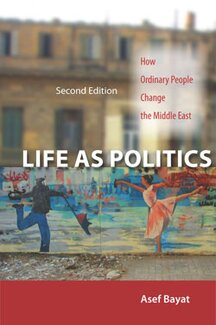
Post-Islamism: The Changing Faces of Political Islam
At least since the Islamic revolution of 1979 in Iran, political Islam or Islamism has been the focus of attention among scholars, policymakers, and the general public. Much has been said about Islamism as a political and moral/ethical trend, but scant attention is paid to its ongoing development. There is now a growing acknowledgment within the scholarly and policy communities that Islamism is in the throes of transformation, but little is known about the nature and direction of these changes. The essays of Post-Islamism bring together young and established scholars and activists from different parts of the Muslim World and the West to discuss their research on the changing discourses and practices of Islamist movements and Islamic states largely in the Muslim majority countries. The changes in these movements can be termed 'post-Islamism,' defined both as a condition and a project characterized by the fusion of religiosity and rights, faith and freedom, Islam and liberty. Post-Islamism emphasizes rights rather than merely obligation, plurality instead of singular authoritative voice, historicity rather than fixed scriptures, and the future instead of the past.
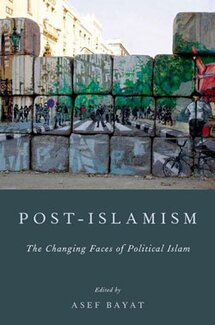
Expanding the Strike Zone: Baseball in the Age of Free Agency
With its iconic stars and gleaming ballparks, baseball has been one of the most captivating forms of modern popular culture. In Expanding the Strike Zone, Daniel A. Gilbert examines the history and meaning of the sport’s tumultuous changes since the mid-twentieth century, amid Major League Baseball’s growing global influence. From the rise of ballplayer unionism to the emergence of new forms of scouting, broadcasting, and stadium development, Gilbert shows that the baseball world has been home to struggles over work and territory that resonate far beyond the playing field.
Readers encounter both legendary and unheralded figures in this sweeping history, which situates Major League Baseball as part of a larger culture industry. The book examines a labor history defined at once by the growing power of big league stars—from Juan Marichal and Curt Flood to Fernando Valenzuela and Ichiro Suzuki—and the collective struggles of players working to make a living throughout the baseball world. It also explores the territorial politics that have defined baseball’s development as a form of transnational popular culture, from the impact of Dominican baseball academies to the organized campaign against stadium development by members of Seattle’s Asian American community.
Based on a rich body of research along with new readings of popular journalism, fiction, and film, Expanding the Strike Zone highlights the ways in which baseball’s players, owners, writers, and fans have shaped and reshaped the sport as a central element of popular culture from the postwar boom to the Great Recession.
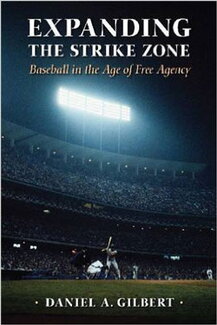
Critical Theory: A Reader for Literary and Cultural Studies
A wide-ranging and refreshingly up-to-date anthology of primary readings, Critical Theory: A Reader for Literary and Cultural Studies, edited by Robert Dale Parker, presents a provocative mix of contemporary and classic essays in critical theory.
From the foundational ideas of Marx and Freud to key writings by Fanon and Foucault, the essays in this collection represent the most influential ideas in modern critical thought and in the contemporary interpretation of literature and culture.
Ideal as a stand-alone reader or as a companion to a critical theory survey--including How to Interpret Literature: Critical Theory for Literary and Cultural Studies, also by Robert Dale Parker--this collection of seminal readings invites students to join in the ongoing debates and controversies of critical discussion, reading, writing, and interpretation.
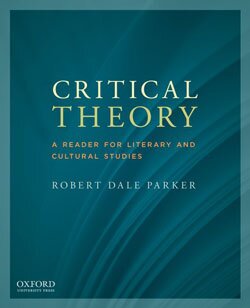
Approaches to Teaching the Works of Naguib Mahfouz
Naguib Mahfouz is the Arab world’s best-known writer and the single most important chronicler and analyst of twentieth-century Egypt. He was awarded the Nobel Prize in Literature in 1988, and since then his work has been increasingly studied in North American university classrooms. This first volume in the MLA series Approaches to Teaching World Literature to focus on an Arab author or Arabic literature provides an introduction to Mahfouz.
In part 1, “Materials,” the editors discuss Mahfouz’s background, influence, and critical reception. In part 2, “Approaches,” the volume’s contributors offer information, resources, and insights for teaching his work. Topics covered include the Arabian Nights tradition in Mahfouz’s work, the challenge of teaching Mahfouz in English translation, the Nasserite intellectual in The Beggar, the image of Alexandria in Miramar, the bitterness of British occupation in Midaq Alley, and the quest of Sufism in “Zaabalawi.”
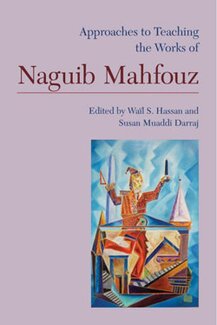
Changing Is Not Vanishing: A Collection of American Indian Poetry to 1930
Until now, the study of American Indian literature has tended to concentrate on contemporary writing. Although the field has grown rapidly, early works—especially poetry—remain mostly unknown and inaccessible. Changing Is Not Vanishing simultaneously reinvents the early history of American Indian literature and the history of American poetry by presenting a vast but forgotten archive of American Indian poems. Through extensive archival research in small-circulation newspapers and magazines, manuscripts, pamphlets, rare books, and scrapbooks, Robert Dale Parker has uncovered the work of more than 140 early Indian poets who wrote before 1930.
Changing Is Not Vanishing includes poems by 82 writers and provides a full bibliography of all the poets Parker has identified—most of them unknown even to specialists in Indian literature. In a wide range of approaches and styles, the poems in this collection address such topics as colonialism and the federal government, land, politics, nature, love, war, Christianity, and racism. With a richly informative introduction and extensive annotation,Changing Is Not Vanishing opens the door to a trove of fascinating, powerful poems that will be required reading for all scholars and readers of American poetry and American Indian literature.
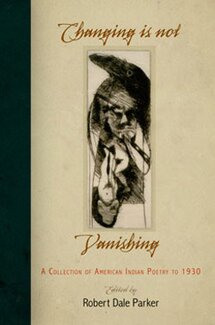
Immigrant Narratives: Orientalism and Cultural Translation in Arab American and Arab British Literature
Arab immigrants began to arrive in the United States in the late-nineteenth century and in Britain after World War Two. Those immigrants have produced a vast literature that remains relatively unknown outside of specialist circles. Like other ethnic literatures, Arab-American and Arab-British writing treats a variety of themes such as the immigrant experience, the lives of minorities, cultural misconceptions, and stereotypes. In addition to that, Arab immigrant writing also reveals unique perspectives on complex issues that continue to shape our world today, such as inter-faith relations, the tangled politics of the Middle East, the role played first by the British empire then by the United States in the region, the representations of Arabs and Arab culture in British and American societies, and the status of Muslim minorities there. Although those issues have acquired an unprecedented urgency in the post-9/11 period, they have preoccupied Arab-American and Arab-British writers since the early days of the twentieth century. While this book is not a comprehensive literary history, it offers a critical reading of that tradition from its inception to the present. Drawing upon postcolonial, translation, and minority discourse theory, Immigrant Narratives investigates how key novelists and autobiographers have described their immigrant experiences, and in so doing acted as mediators and interpreters between cultures, and how they have forged new identities in their adopted countries.

The Politics of Anxiety in Nineteenth-Century American Literature
For much of the nineteenth century, the nervous system was a medical mystery, inspiring scientific studies and exciting great public interest. Because of this widespread fascination, the nerves came to explain the means by which mind and body related to each other. By the 1830s, the nervous system helped Americans express the consequences on the body, and for society, of major historical changes. Literary writers, including Nathaniel Hawthorne and Harriet Beecher Stowe, used the nerves as a metaphor to re-imagine the role of the self amidst political, social and religious tumults, including debates about slavery and the revivals of the Second Great Awakening. Representing the 'romance' of the nervous system and its cultural impact thoughtfully and, at times, critically, the fictional experiments of this century helped construct and explore a neurological vision of the body and mind. Murison explains the impact of neurological medicine on nineteenth-century literature and culture.
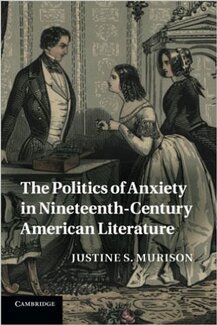
The 'Invisible Hand' and British Fiction, 1818-1860: Adam Smith, Political Economy, and the Genre of Realism
The 'invisible hand', Adam Smith's metaphor for the morality of capitalism, is explored in this text as being far more subtle and intricate than is usually understood, with many British realist fiction writers (Austen, Dickens, Gaskell, Eliot) having absorbed his model of ironic causality in complex societies and turned it to their own purposes.
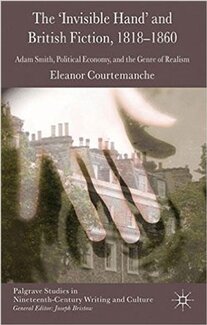
For Love or for Money: Balzac's Rhetorical Realism
Everyone agrees that Balzac is a realistic writer, but what do we actually mean when we say that? This book examines the richness and variety of Balzac’s approaches to realism, employing several different interpretive methods. Taking love and money as the “Prime Movers” of the world of La Comédie humaine, twenty-one chapters provide detailed analyses of the many strategies by which the writing forges the powerful impression of reality, the construction we famously think of as Balzacian realism. Each chapter sets the methods and aims of its analysis, with particular attention to the language that conveys the sense of reality. Plots, devices, or interpretive systems (including genealogies) function as images or reflections of how the novels make their meanings. The analyses converge on the central point: how did Balzac invent realism? No less than this fundamental question lies behind the interpretations this book provides, a question to which the conclusion provides a full answer.
A major book in English devoted entirely to Balzac was overdue. Here is the American voice of Balzac studies, an engaging, insightful, and revealing excursion among the masterworks of one of the most important authors of all time.
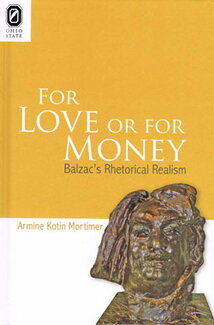
100 English Building
608 South Wright Street
Urbana, Illinois 61801